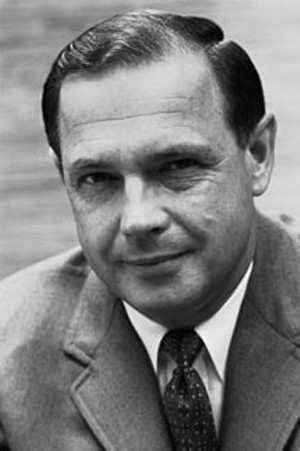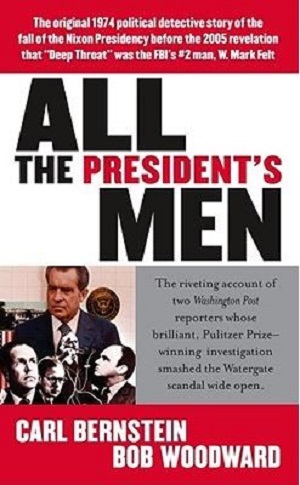LA JOLLA, CA, February 16, 2017 /24-7PressRelease/ -- Alexander Butterfield has been included in Marquis Who's Who since 1969. As in all Marquis Who's Who biographical volumes, individuals profiled are selected on the basis of current reference value. Factors such as position, noteworthy accomplishments, visibility, and prominence in a field are all taken into account during the selection process.
Celebrating a career that has spanned just short of 70 years, Mr. Butterfield is highly regarded for his substantial contributions to both military tactical aviation and civil aviation safety. Further, and importantly, he is widely respected for his personal integrity and the example he set in the maintenance of high ethical standards during the tumultuous years of the "Watergate" political scandal (in 1973 and '74).
After two years at the University of California, Los Angeles (UCLA) and a short stint in the Naval Air Reserve, Mr. Butterfield joined the U.S. Air Force as an aviation cadet in 1948 and became a rated pilot and commissioned Second Lieutenant on September 30, 1949. Preferring single engine fighter aircraft to larger, less maneuverable planes, he felt fortunate to be assigned initially to Las Vegas, Nevada, the home of the Air Force's fighter-gunnery training program. For two years he instructed there in both P-51 and F-80 aircraft, then was transferred to the 86th Fighter Group in occupied West Germany. Because NATO air power was beginning to expand, Mr. Butterfield (then a First Lieutenant) was tasked immediately with early planning for a full-scale air-to-air and air-to-ground fighter-gunnery training program for all U.S. Air Force tactical units in Central Europe . . . to be modeled similarly to the Air Force's Nevada program in which he had just recently served. Throughout the next 30 months, he renovated and brought up to USAF standards two long-dormant German ground gunnery ranges, wrote and disseminated to arriving squadrons a monthly fighter-gunnery newsletter, authored the first official Twelfth Air Force and U.S. Air Force, Europe "Fighter-Gunnery Training Manual," and spent several months in Tripoli, Libya, helping standardize procedures and techniques at the Air Force's aerial-gunnery encampment already underway. Simultaneously, Mr. Butterfield flew the right wing and deputy lead positions on the "Skyblazers," (America's only formation jet aerobatic team in Europe throughout the 1950's) and was a member of the six-man fighter-gunnery team that won the European Championship in 1954. After subsequent assignments as Operations Officer of an interceptor squadron, instructor at the new USAF Academy at Colorado Springs, senior aide to legendary General Emmett (Rosy) O'Donnell, Commander-in-Chief of Pacific Air Forces, and as Squadron Commander of a large tactical reconnaissance squadron in Japan, Mr. Butterfield found himself one of very few officers fortunate enough to have achieved, over the years, combat-ready status in all four categories of tactical military aviation: air-to-air; air-to-ground; all-weather intercept; and photographic reconnaissance. By 1964 he had flown 98 combat sorties in Southeast Asia, been awarded a Distinguished Flying Cross, Bronze Star and four Air Medals, and devised, in coordination with a Navy friend (Capt. M. M. Casey), Air Officer aboard the USS Kitty Hawk stationed off the South Vietnam coast, an emergency air-to-air refueling plan that operated flawlessly and might well have saved a number of reconnaissance aircraft on long return flights back to Saigon. He was a military parachutist by then, a Command Pilot with some 5,000 hours in fighter-type aircraft . . . and in his "military occupational specialty" (MOS), Tactical Fighter Operations, he had formed some strong opinions: (1) there should be more safety "consciousness" during training phases and fewer pointless rules issued, seemingly, in the guise of safety; (2) aggressiveness should be encouraged throughout all post-training flight operations. In short, pilots should know and be so familiar with the full range of their aircraft's capabilities that in the normal course of day-to-day flying they take advantage of those capabilities more or less intuitively. (On his final departure from Saigon, as if to make a statement, he led four RF-101 "Voodoos," in a formation take-off, high-speed climb, non-stop flight to Okinawa; and though having by-passed the mandatory fuel stop in the Philippines, landed safely with fuel to spare).
Assignments and years came and went before Mr. Butterfield became associated with the civil side of aviation: special air warfare policy planner in the Pentagon; Military Assistant for White House Matters in the Immediate Office of the Secretary of Defense; promotion to Colonel while a student at the National War College; and Senior U.S. Military Officer and Commander-in-Chief Pacific Representative to the Government of the Commonwealth of Australia. Throughout the Australian duty, because the Australians had ordered from the United States twelve new swing-wing F-111 fighter-bombers, Colonel Butterfield, having flown and become familiar with the new aircraft and its unique capabilities, quite apart from his other duties, served as project and liaison officer with the Minister of Defense and the Royal Australian Air Force. After a decision in January 1969 to accept the offer of a presidential appointment by President-Elect Nixon, and the receipt of a Legion of Merit award from his immediate superior, Commander in Chief of the Pacific Command, Admiral John McCain, Colonel Butterfield left Canberra for Washington, D.C., where he was retired from active duty. On January 21, 1969, he was sworn in as Deputy Assistant to the President with duty as Deputy White House Chief of Staff and prime responsibility for the operation of the Oval Office and the smooth running of the President's official day. After serving in that capacity for four years, and additionally as Secretary to the Cabinet for the last three, Mr. Butterfield asked to leave the White House. In December 1972, he was nominated to serve as Administrator of the Federal Aviation Administration and in March 1973 was unanimously confirmed by the Senate. With certain preconceived notions about the FAA, Mr. Butterfield sought to dampen the often defensive stance taken by the agency when confronted by public or media criticism, or by Transportation Safety Board recommendations. In fact, in his efforts to emphasize aviation safety, he ordered a thorough "second review" of all Transportation Safety Board recommendations received during the past five years. He also tried mightily to restructure the cumbersome, world-wide organization to reflect a greater emphasis on both air safety and survivability, and a new recognition that the nation's airports, as integral components of the national civil aviation system, require more regulatory attention; but resistance by the Department of Transportation (FAA's parent) was often overwhelming. He did initiate a series of highly successful "listening sessions" which gave all civil aviation constituencies an opportunity to convey constructive complaints and ideas directly to FAA senior managers; and he was widely applauded when in late 1973 he made compliance with all safety-related directives by the FAA immediately mandatory. By his own admission, Mr. Butterfield felt that his tenure at the helm of the FAA could have been more productive, and might have been had he not been injected by unforeseen circumstances into the chaos that was "Watergate." It was shortly after he arrived at the FAA that a member of the national media urged the Senate Select Committee investigating campaign finance and other activities to call Mr. Butterfield as a witness. The media representative knew what few others outside the White House knew -- that Mr. Butterfield was the sole deputy to White House Chief of Staff, Bob Haldeman. The plea was ignored at first, but eventually approved, and under questioning by the Senate (Watergate) Committee staff on Friday, July 13, 1973, Mr. Butterfield revealed that President Nixon had a secret taping system in the Oval Office and at several other White House locations. This information was confirmed the following Monday, July 16, before the full Committee, and was explosive. It was precisely the evidence needed to prove that the President had been aware of the White House cover-up of illegal activities all along, and that John Dean, the former Counsel to the President, had been telling the truth when a few weeks earlier he had accused the President of complicity. Mr. Butterfield who had complied with the President's order to surreptitiously install the White House listening devices back in early 1971 and who, for obvious reasons, had not wanted to testify, was put in a rather untenable position. He was confident, however, that if the subject of listening devices came up -- and there was no reason then to believe that it might -- he would be forthright and tell the truth, but only if the query were put to him (by his own interpretation) clearly and directly. After four hours of grilling, the precise question was asked, and there was no ambiguity. Though he had been aware of White House skullduggery, he was still a Nixon loyalist and it wounded him deeply to have to be the one to reveal what had been a well-kept presidential secret for more than two years. He said to the Committee, "I'm sorry you asked that question. Yes, there were listening devices. It was a fairly elaborate system." It seemed that the national log-jam had broken. Then, a year later - July 2, 1974 - Mr. Butterfield, still at the FAA, was called as the first of eight witnesses to come before the House Judiciary Committee during its deliberations of the President's impeachment. Time had passed and Mr. Butterfield had seen and been affected by, among other events, the number of friends -- young bright and well-meaning -- who were facing prison sentences and in some cases divorce. He later wrote, "They had simply been ensnared by the glitter and deceit of the presidency. Mr. Nixon, himself had exploited their loyalty." With a new and different mind-set, his 10-hour, closed door testimony was more damaging than not, and again he was seen by hardcore, but dwindling, numbers of Nixon friends as an "outsider." Mr. Butterfield resigned on March 31, 1975 after 26 years of federal service.
To support his career, Mr. Butterfield earned a Bachelor of Science degree in Political Science from University of Maryland, a Master of Science degree in International Affairs from George Washington University and a Master of Arts degree in American History from the University of California. In the past, Mr. Butterfield was a member of the Los Angeles County Museum of Natural History and, for six years, a presidentially-appointed member of the National Armed Forces Museum Advisory Board of the Smithsonian Institution. He was also a member in 1968 of a military-scientific expedition to the South Pole, chairman of Chancellor's Associates at the University of California, San Diego, a 38-year member of the Bel-Air County Club and a director of both Aloha Airlines and the International Flight Safety Foundation. Along the way, Mr. Butterfield contributed articles to the Journal of American History and to Harpers and other national magazines. Today, although retired, he remains active through his memberships in the Air Force Association, the Tailhook Association, the Thunderbird Alumni Association, the American Film Institute, the Screen Actors Guild and the University Club of San Diego. Most recently, he was selected for inclusion into other Who's Who publications: Who's Who in American Politics, Who's Who in Science, Who's Who in Engineering, Who's Who in the West and Who's Who in the World. In addition to his professional work, Mr. Butterfield is a prominent civic leader in the San Diego area, serving currently as a member of the Board of Directors of Dr. Seuss Enterprises, L.P., Vice-President of the Dr. Seuss Foundation, and as Chairman of the Institute for Brain and Society. And each year, in March, he lectures on "The Modern American Presidency" at several institutions in the United Kingdom, among them Warwick University in Coventry, the Rothermere American Institute at Oxford University, University College London and the British Library in London. Divorced in 1985, Mr. Butterfield lives alone in La Jolla, California and remains close to his former wife, their three children, eight grandchildren and five great-grandchildren.
About Marquis Who's Who :
Since 1899, when A. N. Marquis printed the First Edition of Who's Who in America , Marquis Who's Who has chronicled the lives of the most accomplished individuals and innovators from every significant field of endeavor, including politics, business, medicine, law, education, art, religion and entertainment. Today, Who's Who in America remains an essential biographical source for thousands of researchers, journalists, librarians and executive search firms around the world. Marquis now publishes many Who's Who titles, including Who's Who in America , Who's Who in the World , Who's Who in American Law , Who's Who in Medicine and Healthcare , Who's Who in Science and Engineering , and Who's Who in Asia . Marquis publications may be visited at the official Marquis Who's Who website at www.marquiswhoswho.com.
# # #
Contact Information
Fred Marks
Marquis Who's Who Ventures LLC
Berkeley Heights, NJ
USA
Telephone: 844-394-6946
Email: Email Us Here
Website: Visit Our Website




